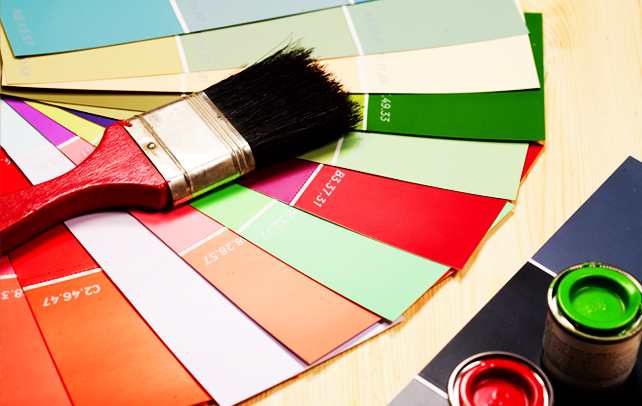We can purchase many types of paints ready mixed, however there are other factors that we need to consider. As an example, surfaces could have different adaptability to atmospheric conditions and other things. Some factors that we don’t expect could have somewhat adverse effects on the performance of the paint. Paints are typically subjected to typical weathering actions, such as rain and sun. Exterior of our house is often exposed to different elements, including wind-driven dust and corrosive fumes from factories. Due to these conditions, we may need to choose paints with different capabilities, such as self-cleaning. These paints should have their features shown on the label. Metal surfaces, plaster and concrete could pose special problems for us during a painting session. For example, paints we use on new plaster or masonry should be resistant to alkali and dampness. Paint we use on metal surface should have rust-preventive capability. Colors are other factors we should consider and they are also quite significant.
Many paint manufacturers offer a few hundreds of color options, each named differently. They have different color systems, with thick book that show us colourful tiles and the model number of the paint. With special machines, some stores could actually offer us thousands of different shades by mixing different types of paint. Regardless of the color we choose, it should offer us a high degree of improvement in color quality. Painting our house is also about mixing these paints to allow them reach their full potentials. Some paste paints such as lead in oil, resin emulsion and aluminium should be stirred with any kind of stiff paddle. The consistency must be reduced with specific kinds of liquid based on the recommendations should on the can or bucket. Some paints are available in powdered forms and they also require more liquids to be usable. We should carefully read the manufacturer’s instructions to the amount of water, varnish, oil, thinner and other kinds of liquids we should choose.
A good method of mixing paint is known as boxing. In general, usable paints are mixture of liquids and solids. We should make sure that we mix them properly before mixing. We could do this by pouring a large portion of liquids into the paint can, until certain level of consistency is achieved. We could use a type of stiff paddle to loosen the settled pigment that may accumulate at the bottom of the can. Any lump can be easily broken up and we should use the figure 8 motion to mix the paint thoroughly. It may be necessary to stir the mixture strongly while adding the liquid slowly to make sure that it can be mixed evenly. If we prefer to gain immediate use, we could mix powder and paste paints at specific quantity before we use them. However, mixed paints should be used immediately, because hard lumps may start to form if we let them to stand too long. It should be noted that mixing may or may not change color slightly.




